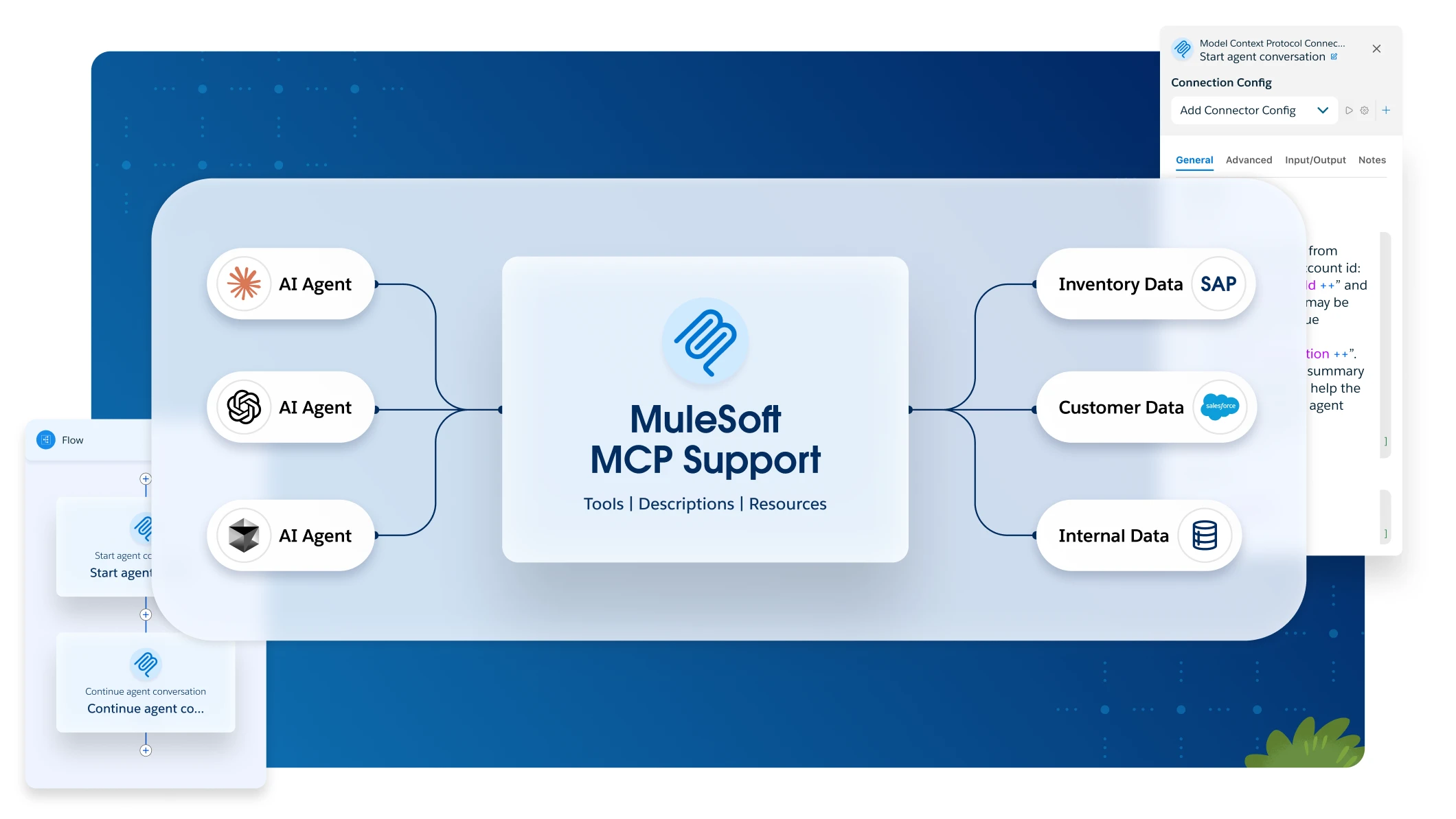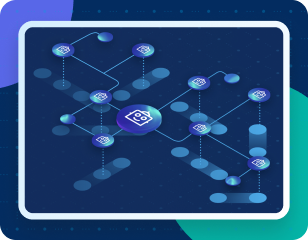MuleSoft: Add Fragment dependency from ExchangeCommand Reference
Anypoint Code Builder provides a set of commands through the Command Palette.
MuleSoft Commands
-
Add an API spec fragment from Exchange to the project directory so that you can include the fragment in your spec. For a procedure that uses this command, see Add a Fragment from Exchange to Your Project.
-
Open the API Console from an API design project. See Creating and Importing API Specifications.
MuleSoft: API Console -
Change the version of an API governance ruleset in an API design project. Select from rulesets in your project, and change the version. For information about rulesets, see Validating API Specifications Against Governance Rulesets.
MuleSoft: Change Ruleset Version -
Deploy an integration or implementation to CloudHub. See Deploy an App to CloudHub.
MuleSoft: Deploy to CloudHub
-
Start an API design project. You can also start the project from the UI. See Creating and Importing API Specifications.
MuleSoft: Design an API -
Start an integration project. You can also start an integration project from the UI. See Creating Integrations.
MuleSoft: Develop an Integration
-
Download a supported version of Mule runtime engine and Java from Anypoint Code Builder. See also, Version Settings for Mule, Java, and Connectors.
MuleSoft: Download Mule Runtime and Java Versions -
Export a shareable JAR file that contains an integration or implementation project. Both types of projects are Mule applications. See Export to a Shareable JAR File.
MuleSoft: Export Mule Application Sources
-
Export a Mule project with its compiled code and all dependencies into a JAR file that you can deploy. See Export to a Deployable JAR File.
MuleSoft: Export Project to Mule Deployable Jar -
Export a compressed file that contains your project’s workspace folders, logs, and information about environment variables, CPU, operating system, and system properties. See Export Troubleshooting Information.
MuleSoft: Export Troubleshooting Information
-
Import a supported API spec from Anypoint Exchange, and scaffold the spec into an implementation project in the IDE. See Scaffold an API and Create an Integration Project.
MuleSoft: Implement an API Specification
-
Scaffold an API spec project located within the IDE into an implementation project. See Scaffold an API Spec into a New Implementation Project.
MuleSoft: Implement this local API -
Import a JAR file for a Mule project and load the unpacked project into a workspace in the IDE. A Mule project is an integration or implementation project. See Import a Shareable Project JAR File into the Desktop IDE or Import a Shareable Project JAR File into the Cloud IDE.
MuleSoft: Import a Mule Project
-
Import a design, integration, or implementation project. Import API specs or fragments from Anypoint Exchange, or a JAR file for a runnable Mule application (integration or implementation) in your IDE directory. See Importing Projects into the IDE.
MuleSoft: Import a Project -
Import an API spec associated with one of your business groups from MuleSoft VCS. See Import an API Specification from MuleSoft VCS.
MuleSoft: Import API Specification from MuleSoft VCS -
Import a connector, REST or GraphQL library, or DataWeave library from Anypoint Exchange. See examples in Import a Connector from Exchange, Import an API Spec into an Existing Implementation Project, and Import a DataWeave Library.
MuleSoft: Import Asset from Exchange
-
Log in to Anypoint Platform from the IDE. See Log in from the IDE through the Command Palette.
MuleSoft: Login to Anypoint Platform
-
Open the Settings page for Anypoint Code Builder settings, which include settings for the Anypoint Platform host (EU or US). For an example that uses the command, see Set the Desktop IDE to the EU or US Cloud.
MuleSoft: Open ACB Settings
-
Publish an API spec or fragment from the IDE to Anypoint Exchange. See Publish an API spec to Exchange.
MuleSoft: Publish API Project to Exchange
-
Select a ruleset to remove from an API design project. For information about rulesets, see Validating API Specifications Against Governance Rulesets.
MuleSoft: Remove Governance Ruleset...
-
After scaffolding an API design project from the IDE into an interface within an implementation project and making subsequent changes to the design project, use this command from the design project to re-scaffold your changes into your interface. See Re-Scaffold the API Spec.
MuleSoft: Re-scaffold this local API -
Validate your API specification against rules in all rulesets added to a design project. For information about rulesets, see Validating API Specifications Against Governance Rulesets.
MuleSoft: Run Governance Validation with all Rulesets and Rules
-
Search for an asset by its name in Anypoint Exchange.
MuleSoft: Search in exchange
-
Expand the Governance Rulesets panel from an open API design project. For information about rulesets, see Validating API Specifications Against Governance Rulesets.
MuleSoft: Show API Governance
-
Open the Welcome tab for Anypoint Code Builder. See an example of the tab in Discovering the UI.
MuleSoft: Show Welcome
-
Open the Project Properties page for a project.
MuleSoft: Open Mule Project Properties
Other Commands
Other helpful commands include the following:
-
Open a project folder from the Command Palette. For examples that use this command, see Adding Folders to Your Home Directory.
File: Open Folder -
Open the Anypoint Code Builder panel from the IDE. The panel provides links to Quick Actions, Documentation, and other items. See an example of the panel in Discovering the UI.
View: Show Anypoint Code Builder



